#Joanna of Flanders
Text
i just wanna share this.
i want a period piece show about female pirates. like, that tells the stories of them. not just Anne Bonney, Mary Read, & Ching Shih. i want them and also Joanna of Flanders, Duchess of Brittany (c. 1295 – September 1374) & Jeanne de Clisson, the Lioness of Brittany (1300 – 1359). i want Gráinne O'Malley/Grace O'Malley/Gráinne Ní Mháille (c. 1530 – c. 1603), Sayyida al Hurra (1485 – July 14th, 1561), and the women of the Killigrew family. i want the possibly fictional, possibly real pirate women of Charlotte de Berry (17th century) & Jacquotte Delahaye (fl. 1656). i want the real but stories are mostly probably fictional Anne Dieu-le-Veut (August 28th, 1661 – January 11th, 1710). i want something that shows us the pirate women from outside Europe & the Caribbean, i want the Canadian pirate woman, Maria Lindsey, and the American pirate woman, Rachel Wall.
#pirates#female pirates#pirate women#13th century#14th century#16th century#15th century#17th century#anne bonny#mary read#ching shih#zheng yi sao#joanna of flanders#jeanne de clisson#the lioness of brittany#grace o'malley#grainne o'mally#sayyida al hurra#killigrew#killigrew family#charlotte de berry#jacquotte delahaye#anne dieu-le-veut#maria lindsey#rachel wall
7 notes
·
View notes
Photo

Joanna of Flanders (c. 1295 – September 1374) was Duchess of Brittany by her marriage to John of Montfort. Much of her life was taken up in defence of the rights of her husband and, later, son to the dukedom, which was challenged by the House of Blois during the War of the Breton Succession. Known for her fiery personality, Joanna led the Montfortist cause after her husband had been captured, and began the fight-back, showing considerable skill as a military leader.
Shortly after taking refuge in England, she was confined to Tickhill Castle by order of King Edward III.
Joanna was highly praised by the chronicler Jean Froissart for her courage and energy. Because of her feats of leadership, David Hume described her as "the most extraordinary woman of the age".
3 notes
·
View notes
Text

Reference drawing of Juana I of Castile for the Tomb of Maximillian I by Jörg Kölderer (1522)
#peep the little pomegranate🥹#juana i of castile#juana of castile#joanna of castile#juana la loca#maximilian i#art#art history#history of art#drawing#northern renaissance art#northern renaissance#renaissance art#renaissance#renaissance history#16th century art#16th century#sixteenth century#16th century fashion#1500s#history#holy roman empire#holy roman emperor#tomb#early modern#flemish art#Flanders#netherlands#netherlandish art#austrian art
336 notes
·
View notes
Text
Thread about Joanna of Castile: Part : 10 “A Storm of Jealousy: Juana and Philip's Turbulent Reunion"


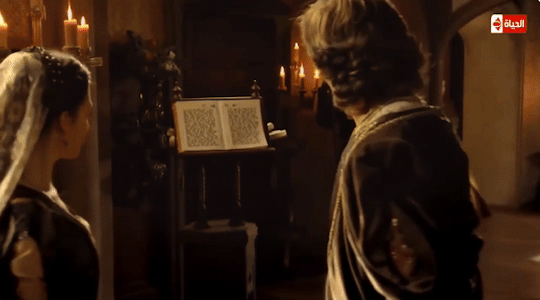
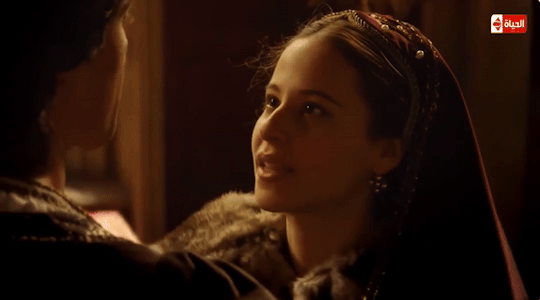
By May 1504, Juana was in Burgundy. Juana’s reunion with Philip and the children was joyful.
But soon afterwards she suspected, or discovered, an affair between Philip and a noblewoman in her entourage:




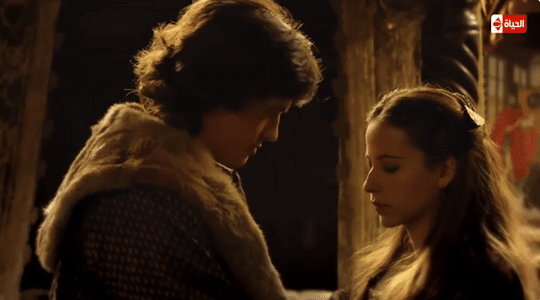

“They say,” writes Martire, “that, her heart full of rage, her face vomiting fames, her teeth clenched, she rained blows on one of her ladies, whom she suspected of being the lover, and ordered that they cut her blond hair, so pleasing to Philip …”


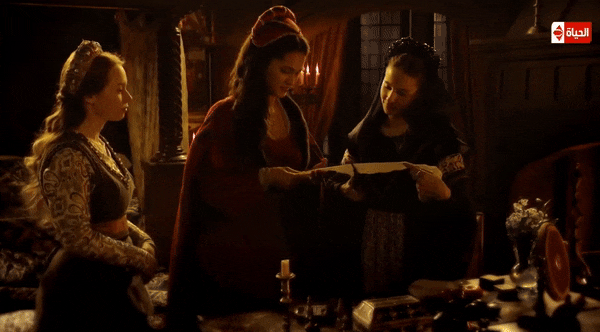
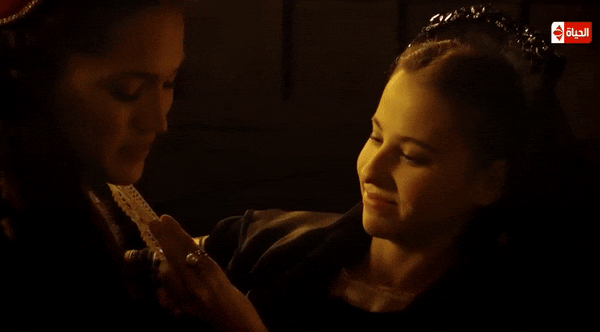


Philip’s response was equally furious. He had “thrown himself” on his wife and publicly insulted her.
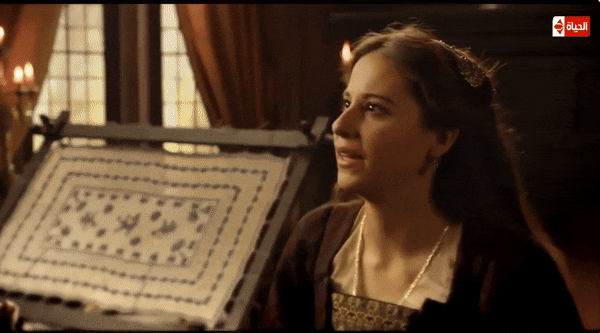



Sensitive and obstinate, “Juana is heartbroken … and unwell …”.
Isabel “suffers much, astonished by the northerner’s violence.
Maximilian’s biographer, Wiesfecker, describes Juana’s response as:
"The symptom of a pathological, passionate, if not unfounded, Haßliebe, fomenting continual strife. "
Juana would have known for years about Philip's visits to the baigneries and his more casual relationships with women. However, this affair seemed to pose a direct challenge to her standing and dignity. Juana knew her faults and had tried to limit them. In 1500, after becoming princess, she had asked Isabel to send her an honest and prudent Spanish lady who:
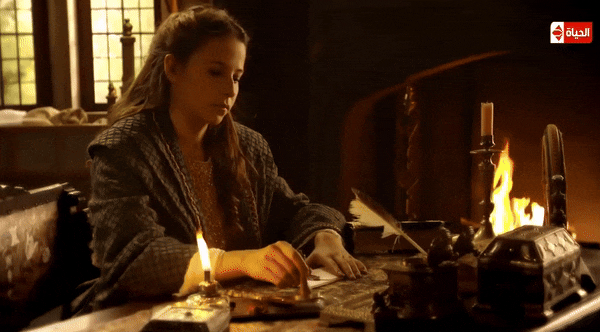



“Knows how to advise her, and where she sees something out of order (‘deshordenado’) in her conduct could say so as servant and adviser but not as an equal because, even if the advice were good, if expressed in a disrespectful way it would create more anger in she to whom it was said than it would allow for correction.”
Sources: Fleming, G. B. (2018). Juana I: Legitimacy and Conflict in Sixteenth-Century Castile (1st ed. 2018 edition). Palgrave Macmillan.
Fox, J. (2012). Sister Queens: The Noble, Tragic Lives of Katherine of Aragon and Juana, Queen of Castile. Ballantine Books.
Gómez, M. A., Juan-Navarro, S., & Zatlin, P. (2008). Juana of Castile: History and Myth of the Mad Queen. Associated University Presse.
#joanna of castile#juana i of castile#juana la loca#philip the handsome#isabel#european history#spanish monarchy#spanish princess#infanta#irene escolar#raul merida#flanders#vlaanderen#Huis Habsburg#House of Valois-Burgundy#Filips I van Castilië#Philippe le Beau
5 notes
·
View notes
Text
“You toil still in service to men. Your father, your husband, your son. You desire not to be free, but to make a window in the wall of your prison. Have you never imagined yourself on the Iron Throne?”
A couple of things:
1) Alicent is a queen consort and is a Hightower by birth, so no, she cannot imagine herself on the Iron Throne, because Targaryen succession does not work like that. This is basic knowledge that 5-year-olds would presumably be expected to know, and I am astounded and embarrassed that Rhaenys, with her age and experience, lacks this fundamental bit of common sense.
2) Alicent has been the functional regent of Westeros for the past six years. In the previous episode, we see her actively governing the realm and overseeing all royal matters (while Rhaenyra sits on her ass with her loser husband in Dragonstone). We also literally hear Vaemond tell Rhaenys “It’s not a king who sits the Iron Throne these days, good sister. It’s the queen”, so I can assure you, Rhaenys, that Alicent has physically sat on the Iron Throne just fine. She lacks authority, obviously, as she is the consort and not the king, but she certainly did not and does not lack power, to say nothing about influence. This ridiculous show, however, does not seem to be able to differentiate these terms.
3) Does this show not understand that Alicent installing her son as King is not just beneficial to him (which the show acknowledges) but also directly beneficial to her? This is a patriarchal and patrimony-inclined world; Alicent’s son being King would not only mean immense prestige for her family; it would also mean the ultimate peak of power and influence for her (which we see her unapologetically wield in the books). In Westeros, we see Visenya Targaryen supporting her brother and her son’s kingship rather than angling for the throne in her own right, and wielding absolute power and authority in their reigns. Historically, Empress Matilda (the female claimant to the throne in the Anarchy, the war this story is based off) relinquished her claim in favor of her son, Henry II, presumably because she recognized he stood a better chance at gaining the throne (which he did) and continuing her legacy. Joanna of Flanders, who literally wore armor and led troops into battle, did it to support the cause of her husband in direct opposition to the claim of his niece. Yet according to this show’s logic, every single woman who has fought for their fathers and brothers and husbands and sons subscribes to internalized misogyny rather than, idk, supporting their families and gaining power, security and status in the process. Not to mention, Alicent relinquishing her children’s claim and stepping aside would not only be utterly humiliating and degrading for her from a political and personal standpoint, but also legitimately life-threatening for her children and her family. More competent writers would understand that she did not have much of a choice.
4) “You desire not to be free but make a window in the wall of your prison” is the MOST SICKENING PIECE OF VICTIM-BLAMING BULLSHIT I have ever heard in a long, long time. Alicent was a teenager when she had to marry the much-older King (her best friend’s own father) because of his desire for her. He repeatedly raped her and forced at least four pregnancies on her that she did not want. She was utterly isolated at court after her marriage, lacking comfort and friends (including Rhaenyra, who abandoned Alicent for three years after learning that she was being made to marry her father and, based on the comments she made, did not even stop to consider the awfulness of Alicent’s predicament). She had to endure the humiliation of her father being fired and made to leave court, leaving her even more alone than she previously was. She had to endure her husband constantly favoring his firstborn and his grandchildren by his firstborn rather than Alicent’s children who were a direct result of her rape by him. Her son was maimed and bleeding and her husband chose to defend his firstborn’s moronic decisions rather than bring him justice. She is not a Targaryen, she does not and cannot ride a dragon. WHAT WAS ALICENT SUPPOSED TO EXCEPT TRY AND SURVIVE? HOW ON EARTH IS SHE BEING JUDGED FOR IT?
(And this ridiculously condescending comment is coming from Rhaenys of all people, lmao. A dragon-riding Targaryen who was an actual claimant to the Iron Throne, unlike Alicent. So, what was stopping HER from seizing power, pray tell? After all, she even has the Velaryon forces to back her claim. Instead, in her own words, she made peace with her sidelining. She constantly disagreed with her husband’s ambition regarding her claim and her family’s power. She volunteered her 12-year-old daughter as a child bride for her own aging cousin. The hypocrisy and double standards here is pathetic, and the lack of self-awareness on the part of the show is even worse)
Alicent was legitimately terrified for her children and her family’s lives, and she was entirely justified in doing so: if Rhaenyra ascended the throne, Alicent’s children would inevitably become threats to her whether or not they directly opposed her. This is unavoidable. Look up any historical usurpation, and that’s the inescapable result - and that’s not even going into the fact that Rhaenyra and Daemon are people who are reckless, cruel and indifferent to violence, and would not hesitate to kill any opposition to their reign. The show’s so-called claim that Alicent is upholding the patriarchy falls apart when you consider the fact that this is the only solution that guarantees the security of her children and herself. How is Alicent’s perfectly understandable motivation written as internalized misogyny?
And moreover, from a writing perspective ... why give her this arc at all? Fire & Blood was badly written, but it doesn’t change the fact that they looked at an ambitious woman who wanted to enhance her power and improve her family’s standing, who directly defied her husband’s wishes in terms of succession in favor of her own, and rewrote this choice into one borne from internalized misogyny. They wrote her as a child bride, a rape victim, an abuse victim and a teen mother and then used this backstory to say that she was conditioned to become the so-called agent of patriarchy (which they do not support with believable evidence) who opposes their so-called feminist protagonist (whose primary enabler is Alicent’s rapist and abuser, btw, not that his abuse is acknowledged nearly enough by the narrative considering how heavily he was romanticized in the last few episodes) It’s a heinous, disrespectful, absolutely terrible writing choice, and I cannot emphasize this nearly enough.
(Oh, and speaking of Rhaenyra, let’s talk about how her queenship solidifies Viserys’s claim over Rhaenys’s. Let’s talk about if she truly cared about women inheriting the Iron Throne - as opposed to just herself - she would have considered this. Let’s talk about how she disregarded the claims of Baela and Rhaena in favour of her son when it came to Driftmark. Rhaenyra is not challenging the patriarchy, her ascension to the Iron Throne will not change anything for anyone except for herself, do not make me laugh by claiming otherwise)
ON TOP OF THIS, the show can’t even decide on a consistent motivation or characterization for Alicent. They repeatedly show us her visceral and justified fear for her children’s lives, which is somehow forgotten in episode eight in favor of her saying that Rhaenyra will be a good queen. Her desire to see her son crowned and thus ensure her children’s safety is disregarded in favor of her actually wanting to fulfil Viserys’s half-baked wishes on his deathbed. They have her say that everyone knows Aegon will be king, and then act surprised when the Green council plots to install him as King. They do not care about Alicent’s personhood and individual character; what they care about is her position as a foil and antagonist to Rhaenyra.
In conclusion: this show sucks. It shows absolutely no understanding regarding the politics of its own world and our medieval history and is a parody and a travesty of respectful storytelling. It has inconsistent and baffling character motivations and downright misogynistic writing, and this is not acknowledged nearly enough by the fandom.
#hotd#anti hotd#alicent hightower#team green#anti rhaenys targaryen#anti rhaenyra targaryen#not really but kinda#hotd critical#anti viserys i targaryen#does anyone even care about that shitshow anymore? idk and idc. i've wanted to rant about this for a long long time#mine
986 notes
·
View notes
Text
Ages of English Queens at First Marriage
I have only included women whose birth dates and dates of marriage are known within at least 1-2 years, therefore, this is not a comprehensive list. For this reason, women such as Philippa of Hainault and Anne Boleyn have been omitted.
This list is composed of Queens of England when it was a sovereign state, prior to the Acts of Union in 1707. Using the youngest possible age for each woman, the average age at first marriage was 17.
Eadgifu (Edgiva/Ediva) of Kent, third and final wife of Edward the Elder: age 17 when she married in 919 CE
Ælfthryth (Alfrida/Elfrida), second wife of Edgar the Peaceful: age 19/20 when she married in 964/965 CE
Emma of Normandy, second wife of Æthelred the Unready: age 18 when she married in 1002 CE
Ælfgifu of Northampton, first wife of Cnut the Great: age 23/24 when she married in 1013/1014 CE
Edith of Wessex, wife of Edward the Confessor: age 20 when she married in 1045 CE
Matilda of Flanders, wife of William the Conqueror: age 20/21 when she married in 1031/1032 CE
Matilda of Scotland, first wife of Henry I: age 20 when she married in 1100 CE
Adeliza of Louvain, second wife of Henry I: age 18 when she married in 1121 CE
Matilda of Boulogne, wife of Stephen: age 20 when she married in 1125 CE
Empress Matilda, wife of Henry V, HRE, and later Geoffrey V of Anjou: age 12 when she married Henry in 1114 CE
Eleanor of Aquitaine, first wife of Louis VII of France and later Henry II of England: age 15 when she married Louis in 1137 CE
Isabella of Gloucester, first wife of John Lackland: age 15/16 when she married John in 1189 CE
Isabella of Angoulême, second wife of John Lackland: between the ages of 12-14 when she married John in 1200 CE
Eleanor of Provence, wife of Henry III: age 13 when she married Henry in 1236 CE
Eleanor of Castile, first wife of Edward I: age 13 when she married Edward in 1254 CE
Margaret of France, second wife of Edward I: age 20 when she married Edward in 1299 CE
Isabella of France, wife of Edward II: age 13 when she married Edward in 1308 CE
Anne of Bohemia, first wife of Richard II: age 16 when she married Richard in 1382 CE
Isabella of Valois, second wife of Richard II: age 6 when she married Richard in 1396 CE
Joanna of Navarre, wife of John IV of Brittany, second wife of Henry IV: age 18 when she married John in 1386 CE
Catherine of Valois, wife of Henry V: age 19 when she married Henry in 1420 CE
Margaret of Anjou, wife of Henry VI: age 15 when she married Henry in 1445 CE
Elizabeth Woodville, wife of Sir John Grey and later Edward IV: age 15 when she married John in 1452 CE
Anne Neville, wife of Edward of Lancaster and later Richard III: age 14 when she married Edward in 1470 CE
Elizabeth of York, wife of Henry VII: age 20 when she married Henry in 1486 CE
Catherine of Aragon, wife of Arthur Tudor and later Henry VIII: age 15 when she married Arthur in 1501 CE
Jane Seymour, third wife of Henry VIII: age 24 when she married Henry in 1536 CE
Anne of Cleves, fourth wife of Henry VIII: age 25 when she married Henry in 1540 CE
Catherine Howard, fifth wife of Henry VIII: age 17 when she married Henry in 1540 CE
Jane Grey, wife of Guildford Dudley: age 16/17 when she married Guildford in 1553 CE
Mary I, wife of Philip II of Spain: age 38 when she married Philip in 1554 CE
Anne of Denmark, wife of James VI & I: age 15 when she married James in 1589 CE
Henrietta Maria of France, wife of Charles I: age 16 when she married Charles in 1625 CE
Catherine of Braganza, wife of Charles II: age 24 when she married Charles in 1662 CE
Anne Hyde, first wife of James II & VII: age 23 when she married James in 1660 CE
Mary of Modena, second wife of James II & VII: age 15 when she married James in 1673 CE
Mary II of England, wife of William III: age 15 when she married William in 1677 CE
102 notes
·
View notes
Note
You're so right about Katniss! Her feelings for Peeta always felt like obligation - because he was kind, because he loved her and he deserved to be loved back, because he was what she was supposed to want and she'd be crazy not to - and she had mad vibes with Joanna. (The Katniss thing is also why I hated all of the MCU Natasha ships with guys. She's my second pick after Nina for character I am convinced is a lesbian.)
Thank you so much for articulating all this and sending it my way because I've felt nuts for years reading it this way (+ it's a pleasure to hear from you)! And that's with Joniss as a relatively popular ship, lolol.
I won't deny that him saving her from starving and later all they did for one another during the Games isn't meaningful, but you put it perfectly; the text keeps telling us he deserved to be loved back, he's what she ought to want. It makes a point about why she doesn't owe Gale, but wholly kind of sells us on her owing Peeta. The text makes a point of how Katniss, very realistically, has hang-ups about debt, and how the nature of Panem's totalitarianism is such that all kind acts are viewed as transactional rather than genuine, but then completely undermines this by providing little to no meat to how Katniss' real feelings developed from the ones staged for the Games. It's one of those cases where even if the guy isn't a Nice Guy, there's textual Nice Guying going on lolol. (I do also acknowledge that these books were products of the aughts and queer characters in YA were almost nonexistent, but having recently read Moth Diaries from 2002 which actively engages with comphet, I'm feeling spoiled lol.)
Likewise, the having children thing is like -- I get it, people can change their minds and her not wanting to be a mother was a product of the dystopian society they subsequently rebuilt as well as her own experience of maternal neglect, but given what the real world has always been wrt reproductive rights and just in general treating female queerness/nonconformity as a "phase you'll outgrow"/"you'll find the right guy and want kids eventually", I don't think I'll ever not feel gross about a character who does not want kids eventually ~embracing motherhood~ lmao. It could happen, but when the characters are fictional and hence in the author's control...it feels like propaganda, especially coupled with her repeatedly stating she didn't want a husband. And the quote from the epilogue is literally "It took five, ten, fifteen years for me to agree. But Peeta wanted them so badly." Which. Ew.
Contrast with Johanna, where things felt a lot more organic, less based on a sense of debt and more on some classic rivalry tropes that evolved into a sweet balance between an organic camaraderie and Stupid Sexy Flanders (I mean, the elevator scene? Straight girls do not react like that! "Johanna's motivational insults" and the relationship shift?)
Anyhow, thanks again for the message and sorry for the mini-essay/rant this turned into, haha. I'd be mega interested to hear your MCU Natasha thoughts, though, since your Nina tags were so accurate! (Equally biased because she was an early sapphic crush for me, haha.)
#the hunger games#lesbian katniss truther hours#allthestoriescantbelies#thanks for the ask! <3#pregnancy cw
35 notes
·
View notes
Photo

Joanna of Constantinople and her husband Thomas of Savoy by Edmond de Busscher.
The eldest daughter of Emperor Baldwin of Constantinople and Mary of Champagne, her parents died in the Crusades in 1205. She was raised in Paris under the guardianship of King Philip Augustus, who married her to Ferrand of Portugal in 1212. The latter soon turned against his French suzerain, provoking a war that ended in the defeat of Bouvines and the imprisonment of the young count. Jeanne then governs Flanders and Hainaut alone. She had to face the rivalry of her sister Marguerite, then the sedition of her counties led by an impostor who claimed to be her father. At the end of this civil war, her husband Ferrand is released, but dies shortly afterwards. She married Thomas of Savoy in her second marriage.
#edmond de busscher#kingdom of belgium#comtes de flandre#comtesse de flandre#jeanne de constantinople#jeanne de hainaut#jeanne de flandre#countess of flanders#county of flanders#comté de flandre#full length portrait#full-lenght portrait
8 notes
·
View notes
Text










Olite Castle (Palacio Real de Olite), Navarre, Spain 🏰🇪🇸
The Royal Castle of Olite (Palacio Real de Olite) is a former castle of the kings of Navarre, situated in northern Spain.
Olite castle symbolizes the unique character of the Navarre monarchy in the late medieval period, open to Europe through its interests in France and in contact with the other kingdoms of the Iberian Peninsula.
The first castle, designated the ‘palace of the kings of Navarre’ in 13th-century documents, had been laid out at an unknown date on the site of a Roman praetorium of the 1st century AD; only its outer walls survive, with some Roman foundations, now incorporating the Parador de Turismo.
Olite castle served as a residence for the governors during the kings’ long absences in France, but with the accession of the Evreux dynasty (1328) it became a favourite royal seat, owing to its pleasant climate and position in a rich wooded valley with abundant hunting.
Queen Joanna II (1328–1349) and King Philip III of Evreux (1328–1343), followed by Charles II (1349–1387), all made some improvements to the old castle, but it was during the reign of Charles III (1387–1425) and his wife Eleanor of Castile that this nucleus was expanded, with the construction of new ranges in the space behind the 13th-century church of S María. For this work, begun in April 1399 and continuing, with some interruptions, until 1420, Charles assembled artists of widespread origins.
Many of the painters were from Catalonia, working initially under Master Enrique and then in the second decade of the 15th century under Juan de Laguardia; French artists such as Jacob le Conte and Juan du Ruisel collaborated on the decoration; glass painters came from Aragon and Flanders; and Moors from Tudela were engaged on plasterwork, carpentry and tiled decoration.
The irregular plan of Olite reflects its construction in stages, as the wishes of the patrons developed. The new ranges, with halls, bedrooms, terraces and a chapel dedicated to St George, were linked to courtyards and gardens by hanging galleries and corridors; numerous towers (the keep, the Torre del Homenaje, the Torre Nueva, the Tres Coronas and Cuatro Vientos) crowned the walls, forming an elegant silhouette against the horizon . The massive walls, with only a few slit windows, accentuated the fortified character of Olite, but this was in strong contrast to the luxurious interior.
Charles’s daughter Blanche (1425–1441), wife of the future King of Aragon, John I, continued building works at Olite, and the castle again became an official residence after Navarre lost its independence to Castile in 1515.
Subsequent documents record its gradual decline, despite continual repairs. One of the towers was burnt in 1794, and in 1813, during the Peninsular War, the castle was burnt to prevent its use by the enemy ‘and its interior ruined’.
The ruins were acquired by the provincial government in 1913, and in 1925 Olite castle was declared a national monument to save it from total destruction. Restoration work, begun in 1937, is now well advanced, but although the documents give some indication of the original state, there are difficulties in achieving it.
7 notes
·
View notes
Text
2022 Reading Wrap-Up: the Good, the Bad, and the Meh
Below is a list of books that I read in 2022. I've sorted them into 3 categories: the good (books I loved), the bad (books I didn't like), and the meh (books I thought were just ok). Other than these categories, the books aren't listed in any special order or ranking.
The Good
A Christmas Carol by Charles Dickens
Witches by Brenda Lozano (trans. Heather Cleary)
How the Dukes Stole Christmas by Tessa Dare, Lisa Kleypas, Sophie Jordan, and Joanna Shupe
A Holiday by Gaslight by Mimi Matthews
A Kiss for Midwinter by Courtney Milan
Cinnamon and Gunpowder by Eli Brown
Lady Chatterley's Lover by DH Lawrence
Red Clocks by Leni Zumas
The Prince and the Dressmaker by Jen Wang
Rebecca by Daphne du Maurier
A Ghost in the Throat by Doireann Ni Ghriofa
Possession by AS Byatt
The Good Girl's Guide to Rakes by Eva Leigh
Foote by Tom Bredehoft
The Siren of Sussex by Mimi Matthews
Supersex Ed. Anna Peppard
The Girl in Red by Christina Henry
A Rogue by Night by Kelly Bowen
The Book of Joy by the Dalai Lama and Desmond Tutu
Would I Lie to the Duke by Eva Leigh
Secrets of a Summer Night by Lisa Kleypas
My Fake Rake by Eva Leigh
The Governess Game by Tessa Dare
Morality Play by Barry Unsworth
The Meh
The Witches of New York by Ami McKay
The Iron King by Julie Kagawa
Not All Supermen by Tim Hanley
A Gentleman Never Keeps Score by Cat Sebastian
Witchy, Vol. 1 by Ariel Slamet Reis
The End Games by T. Michael Martin
The Companion by EE Ottoman
Grit by Angela Duckworth
The Invention of Murder by Judith Flanders
The Devil All the Time by Donald Ray Pollock
Last Night with the Earl by Kelly Bowen
A Duke in the Night by Kelly Bowen
Waiting for a Scot Like You by Eva Leigh
Forever Your Earl by Eva Leigh
The Duchess Deal by Tessa Dare
The Rogue of Fifth Avenue by Joanna Shupe
A Curious Beginning by Deanna Raybourne
The Highwayman by Kerrigan Byrne
The Silent Patient by Alex Michaelides
The Widow of Rose House by Dianna Biller
I'm Only Wicked with You by Julie Ann Long
Dangerous Women by Hope Adams
The Rakess by Scarlett Peckham
The Silence of the Girls by Pat Barker
The Bad
Once Upon a Winter's Eve by Tessa Dare
Aphrodite and the Duke by JJ McAvoy
The Arctic Fury by Grace McAllister
The Devil in Winter by Lisa Kleypas
Born to be Wilde by Eloisa James
3 notes
·
View notes
Text
JOANNA OF FLANDERS // DUCHESS OF BRITTANY
“She was Duchess of Brittany by her marriage to John of Montfort. Much of her life was taken up in defence of her husband and, later, her son to the dukedom, which was challenged by the House of Blois during the War of the Breton Succession. Known for her fiery personality, Joanna led the Montfortist cause after her husband had been captured, and began the fight-back, showing considerable skill as a military leader.”
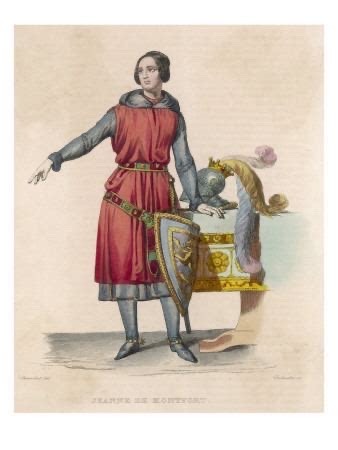

0 notes
Text
«What, sire!» cried Joanna; «am I, then, nothing to you, that you thus receive my enemies into favor without a word said to me? Or have you lost your reason, that you are resolved on nourishing these Flemish serpents to your own destruction?»
Hendrick Conscience, The Lion of Flanders
0 notes
Photo

Joanna of Flanders - “Fiery Joanna”
Joanna of Flanders (b. c.1295 - after 1373) was the daughter of Louis de Nevers, count of Flanders. The heiress of a powerful family, she married in 1329 John of Montfort, half-brother to the duke of Brittany. Said duke died in 1341 without a direct descendant and a war of succession began between John of Montfort and Jeanne of Penthièvres, niece of the deceased duke, who was backed by her husband Charles de Blois. Both factions were supported by the crowns of England and France respectively.
Joanna appears to have been a supporter of her husband’s military maneuvers. In 1341, they occupied Nantes and Rennes and secured the duchy’s treasury. However, it was after John of Montfort was captured that Joanna came to shine as a military leader. She organized the defense of her lands and secured an alliance with Edward III of England. Her most celebrated feat took place when she defended Hennebont as the town was besieged by the troops of Charles de Blois in may 1342.
Jean Le Bel’s describes Joanna in his True Chronicle:
“The valiant countess, armed and riding a great charger from street to street, was cheering and summoning everyone to the city’s defence, and commanding the women of the town, ladies and all, to take stones to the walls and fling them at the attackers, along with pots of quicklime.”
She then personally led an attack on the French camp:
“And now you shall hear of the boldest and most remarkable feat ever performed by a woman. Know this: the valiant countess, who kept climbing the towers to see how the defence was progressing, saw that all the besiegers had left their quarters and gone forward to watch the assault. She conceived a fine plan. She remounted her charger, fully armed as she was, and called upon some three hundred men-at-arms who were guarding a gate that wasn’t under attack to mount with her; then she rode out with this company and charged boldly into the enemy camp, which was devoid of anyone but a few boys and servants.They killed them all and set fire to everything: soon the whole encampment was ablaze.”
This action led her to be nicknamed “Jeanne la Flamme / Fiery Joanna”. Alarmed, the besiegers went back to their camp. Realizing that there was no way to go back to the city, Joanna rallied her men and left for the castle of Brayt. The enemy gave chase and managed to kill some of her retainers, but Joanna escaped with most of her troops.
Joanna planned to return. She gathered 500 well equipped men, left Brayt during the night and arrived to Hennebont at dawn. She then entered the city to a “triumphant blast of trumpets and drums and other instruments”.
English reinforcements later came and the city was saved. This was to be Joanna’s last active part in the war. Froissart extend Jean Le Bel’s account and wrote that Joanna fought actively, sword in hand, during a naval battle. It, however, seems that he confused or conflated two naval battles.
Joanna left for England with her two sons in 1343. She was to never see Brittany again since she was confined to a castle in England. It had been alleged that it was because she had become mentally ill, but a more convincing hypothesis could be that she represented a threat to Edward III who wanted to gain control over her lands.
Interestingly, the leader of the opposite faction, Jeanne de Penthièvres (c.1320-1384), also took the head of the operations after her husband was captured. This is why this war was later nicknamed “The war of the two Jeannes”. In 1347, she took in hand the military leadership and administration of the duchy and organized the defense of her lands against the English in 1354-1355. Though reports and her presence on the field may have been apocryphal, she still proved an competent military leader.
Here’s the link to my Ko-Fi if you want to support me.
Bibliography:
Jean Le Bel, True Chronicle
Evans Michael, “Jeanne de Montfort”, in: Higham Robin, Pennington Reina (ed.), Amazons to fighter pilots, biographical dictionary of military women, vol.1
Evans Michael, “Jeanne de Penthièvres”, in: Higham Robin, Pennington Reina (ed.), Amazons to fighter pilots, biographical dictionary of military women, vol.1
Sarpy Julie, Joanna of Flanders, heroine and exile
#historyedit#Joanna of flanders#history#women in history#jeanne de penthièvres#warrior women#middle ages#badass women#14th century#france#french history#historyblr#medieval history#medieval women#women in armor#moodboard#history mooboard#aesthetic
90 notes
·
View notes
Text
Jeanne “la Flamme”, Duchess of Brittany ~ A guest post by Simon Duits
Jeanne “la Flamme”, Duchess of Brittany ~ A guest post by Simon Duits
Jeanne “la Flamme”, Duchess of Brittany ~ A guest post by Simon Duits
The Freelance History Writer is pleased to welcome historian Simon Duits as a guest on the blog with an article on French/Breton history. He writes extensively about the Middle Ages over at MedievalReporter.com.
During the chaos and confusion of the early Hundred Years’ War, a woman of fiery character led the Duchy of…
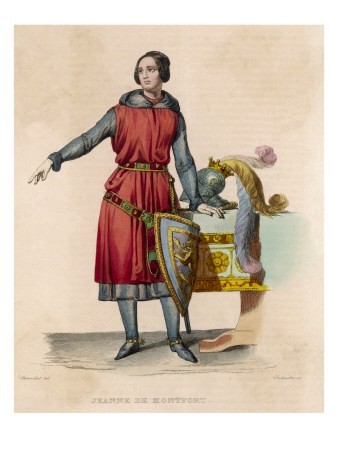
View On WordPress
#Breton history#Charles IV#Charles of Blois#Duchess of Brittany#duchy of Brittany#Duke of Brittany#Edward III#French history#Hundred Years’ War#Jeanne de Penthièvre#Jeanne La Flamme#Jeanne of Flanders#Joanna of Flanders#John Montfort#King of England#King of France#medieval history#Philip VI#War of the Breton Succession#War of the Two Jeannes
5 notes
·
View notes
Text
Thread about Joanna of Castile: Part 8.1: "A Tumultuous Dilemma: Juana's Struggle Between Love and Duties"
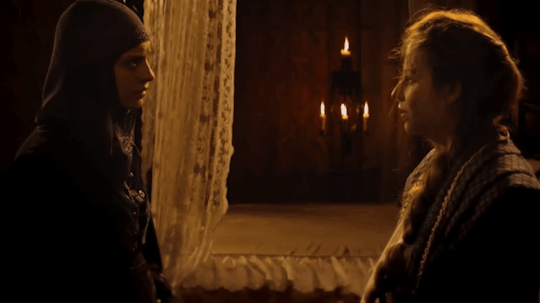


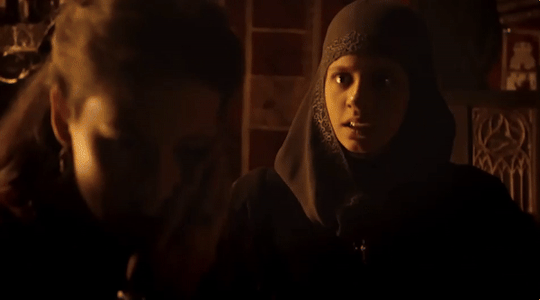
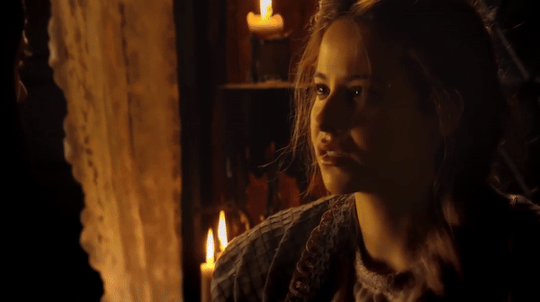
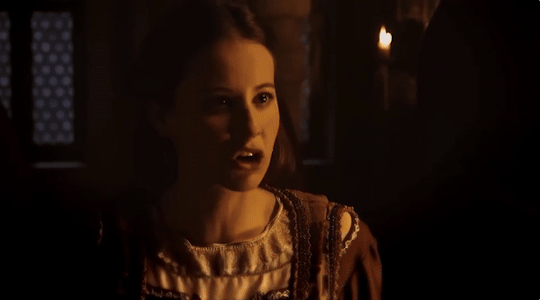


Torn, nonetheless, between mother and husband, old frustrations and resentments erupted. She feared that Isabel planned, in Padilla’s word, to descasar (‘unmarry’) her. The news that Philip, always susceptible to fever, had fallen seriously ill at Lyon would have put her in a state of deep concern. It can be no mere coincidence that, just as Louis’ doctors were despairing of Philip’s recovery, Isabel’s doctors were concluding that relations between mother and daughter had become so bad that they had to be separated.
Even if Juana did not fully realise the seriousness of Philip’s illness, her instinct would have been to rush to his side, and she may have reminded Isabel of the monarchs’ remark of 1500:
“Do not think that you are coming here never to return. Rather, you can come and go as you wish after being sworn-in.”


However, the seas were beginning to build, and Juana was unable to travel through France while hostilities continued. Above all, Isabel’s own health was deteriorating. She attempted to conceal Philips eventual arrival home from Juana “because, in truth, she did not want her daughter to return to Flanders, since she felt very unwell with the illness from which she died.”




Philip, upon his recovery, maintained the pressure for Juana's return by dispatching a series of messengers and letters. In August, Juana assured him that preparations for her departure were under way; that she and Isabel were heading for Burgos and that Ferdinand was well. In the event, Isabel stayed at Segovia while Juana, proceeding north, stayed in the stronghold of La Mota at Medina del Campo.
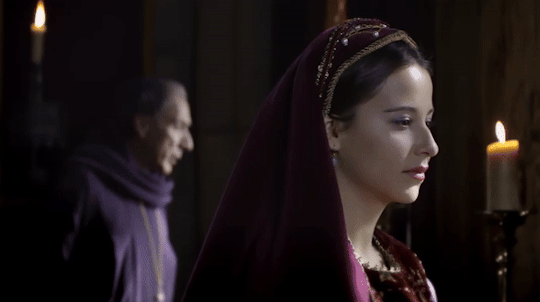


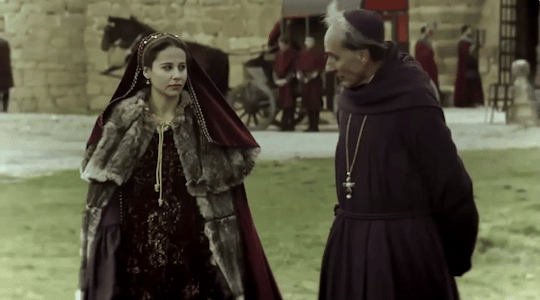


Her residence in the fortress remains something of a mystery. From its hill, the red brick castle, with its massive quadrilinear keep and bartizan towers, was Castile's arsenal as well as archive and occasional lodging place and prison, and it still has a prison. The most likely explanation for Juana's stay is that Isabel had decided that she could be better guarded at La Mota than at the royal palace, since trust was failing on both sides.


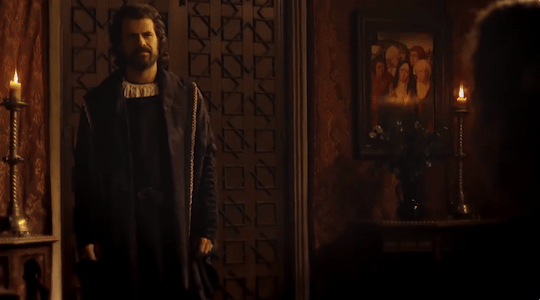
On 6 September, a ship’s captain told Fernando that he had received an order from Juana to await her at Bilbao. A dismayed Isabel wrote:
“I do not think, or expect, and so cannot believe you are leaving, for although there are many necessary reasons for your departure, greater problems may follow if you leave like this.”


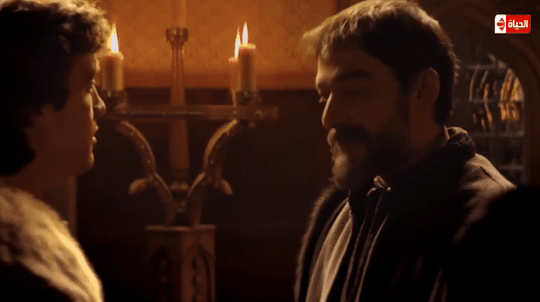



Juana complied. She was, however, beginning to feel pressure from Philip, who used four-year-old Charles to send an emotional appeal. Juana’s last reserves of self-control broke down.
Sources: Fleming, G. B. (2018). Juana I: Legitimacy and Conflict in Sixteenth-Century Castile (1st ed. 2018 edition). Palgrave Macmillan.
Fox, J. (2012). Sister Queens: The Noble, Tragic Lives of Katherine of Aragon and Juana, Queen of Castile. Ballantine Books.
Gómez, M. A., Juan-Navarro, S., & Zatlin, P. (2008). Juana of Castile: History and Myth of the Mad Queen. Associated University Presse.
#joanna of castile#juana i of castile#philip the handsome#juana la loca#isabel#spanish monarchy#johanna van castilie#european history#history#irene escolar#raul merida
5 notes
·
View notes
Text
"In the siege of Hennebont, she took up arms and, dressed in armour, conducted the defence of the town, encouraging the people to fight, and urging the women to 'cut their skirts and take their safety in their own hands". When she looked from a tower and saw that the enemy camp was almost unguarded, she led three hundred men on a charge, burned down Charles' supplies and destroyed his tents. After this she became known as 'Jeanne la Flamme'."
0 notes